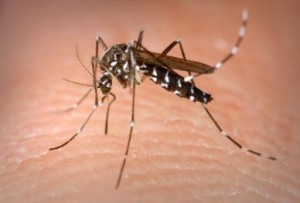Dengue fever and use of Impact-R
Tuesday, October 4th, 2011 Al l four serotypes of dengue viruses are well known for taking the toll of healthcare facilities all over the world. Sporadic cases of dengue fever have scattered distribution including US, Mexico, Puerto Rico and you name any place. Mankind has also seen a multitude of dengue fever epidemics especially in 1979 and 1980 when they swept Asia, Africa and North America. Now, once again dengue has hit a gorgeous land of Pakistan, especially the Punjab Province.
Al l four serotypes of dengue viruses are well known for taking the toll of healthcare facilities all over the world. Sporadic cases of dengue fever have scattered distribution including US, Mexico, Puerto Rico and you name any place. Mankind has also seen a multitude of dengue fever epidemics especially in 1979 and 1980 when they swept Asia, Africa and North America. Now, once again dengue has hit a gorgeous land of Pakistan, especially the Punjab Province.
As already mentioned dengue virus has four serotypes (dengue 1-4), having Aedes aegypti as their principal vector. Aedes aegypti is commonly known as the ‘Tiger mosquito’ that bites during the day as compared to the Anopheles species (causing malaria) that usually bite at night. Aedes aegypti is also a vector for the Yellow fever virus and the Chikungunya virus. It typically breeds near human habitation, using relatively fresh water from the sources like vases, jars, containers etc. All the four serotypes cause the same type of disease in the human beings.
The classic dengue fever has an incubation period of 2-7 days, and patient experiences sudden onset of fever, headache, retro orbital pain, severe back pain associated with myalgias. Due to these symptoms, the fever has been given the name of ‘Break Bone fever’. Other associated features of this disease may be anorexia, nausea, vomiting, and appearance of maculopapular rash all over the body, scleral injection and adenopathy. Even epistaxis and petechiae may appear in an uncomplicated disease. Laboratory findings are leucopenia, thrombocytopenia and in some cases serum aminotransferases may be elevated.
Thrombocytopenia is an important diagnostic finding in the cases of dengue fever that occurs due;
- Direct infection of bone marrow megakaryocytes.
- Immunological shortened platelet survival.
- A more complicated form of infection is the Dengue Hemorrhagic Fever/Dengue Shock Syndrome. It can occur in two forms;
- Re infection of an individual by a heterologous strain of the dengue virus previously infected from the dengue virus.
- Even classic dengue fever can progress to dengue hemorrhagic fever.
Dengue hemorrhagic fever is characterized by overt bleeding in the absence of underlying causes, increased bleeding tendency (can be appreciated by tourniquet test or presence of petechiae). In mild cases restlessness, lethargy, thrombocytopenia (platelets < 100,000 per micro liters) and hemoconcentration appears usually 2-5 days after classic dengue fever. In severe cases there is frank shock, low pulse pressure, cyanosis, hepatomegaly, pleural effusion and ascites. Individuals usually bleed profusely in some severe cases. Most of the people usually respond well on supportive therapy, however some need platelet transfusions.
Here comes the role of Impact-R which can be used for clinical diagnosis of dengue fever by confirming the presence of thrombocytopenia in an individual. Moreover, it also helps determining the function of the platelets being infused in the patients. Stored platelets are usually used in the patients for the treatment of dengue hemorrhagic fever and their functional assessment is done by Impact-R.